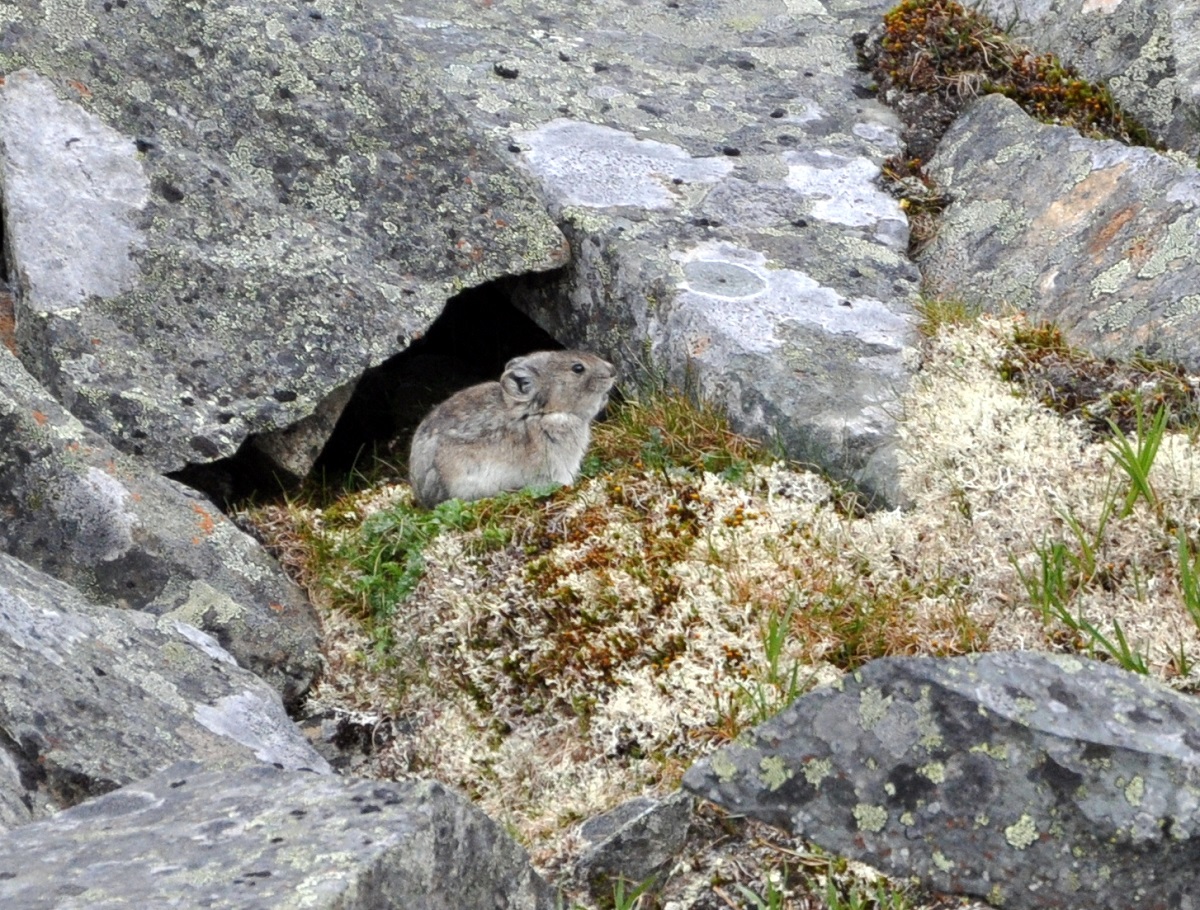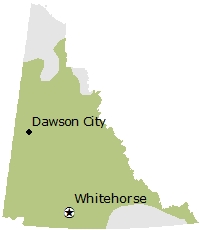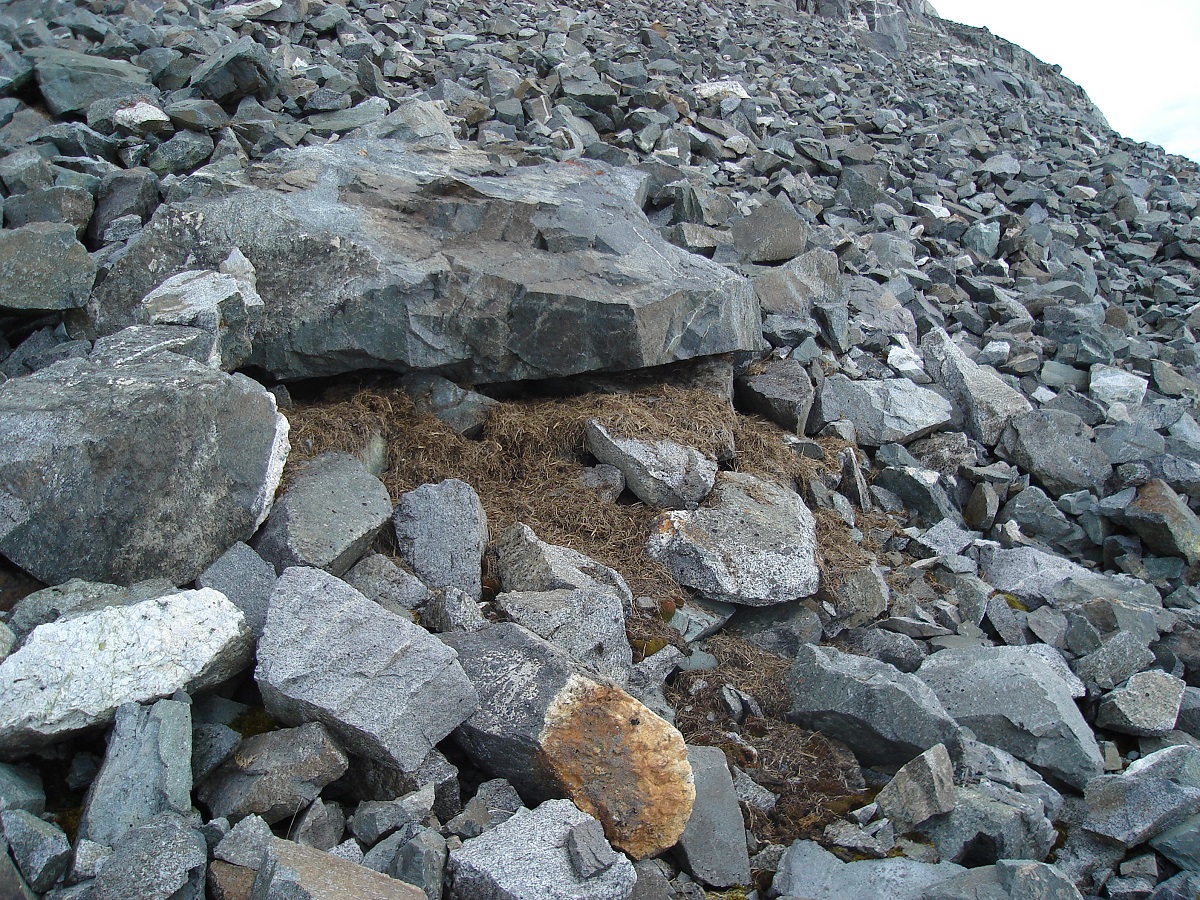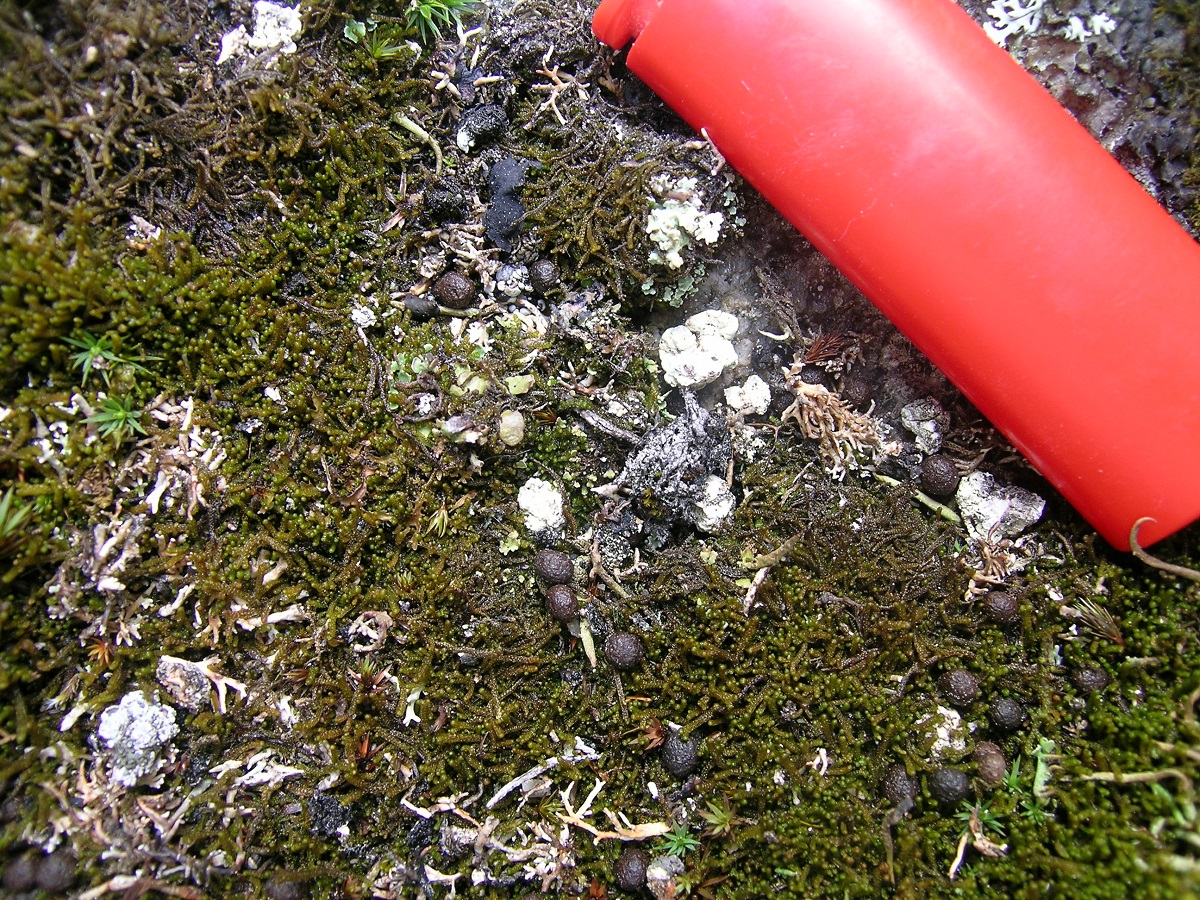
Name
- Common name: Collared Pika
- Scientific name: Ochotona collaris
- Order: Lagomorpha
- Family: Ochotonidae
Also known as
Coney, Rock Rabbit, Whistling Hare
Viewing opportunities
- Collared Pikas live in rock talus patches high in the alpine.
- They can be easily found because of their alarm call that carries across the alpine when you walk by. Although they are heard, they are not necessarily easy to see as they camouflage perfectly among the rocks. Hone in on the call and watch for movement among the rocks, or a silhouette of the pika against the sky.
- Once near its home territory, you may find that the pika will approach within a few metres, if you are able to remain nearly motionless and quiet for a few minutes.
- In late summer and fall, look for conspicuous collections of plants, called ‘hay piles’ among the rocks. Pikas build hay piles for winter food.
Report sightings of Collared Pika
The Committee on the Status of Endangered Wildlife in Canada (COSEWIC) has assessed Collared Pika as a species of Special Concern. Voluntarily report your observations to the Yukon Conservation Data Centre.
Read the Protocol for detecting Collared Pika.
Description
- Small chubby body with short limbs and rounded ears.
- Grey fur and mouse-like in appearance.
- Inconspicuous bobbed tail, long whiskers.
Fast facts
- Length: 15 to 20 cm
- Weight: 160 g
- Lifespan: 6 years
- Predators: Hawks, owls, bears, Ermine
- Habitat: Alpine tundra
Conservation status
- Yukon: S3 (Vulnerable)
- Global: G5 (Secure)
Yukon population estimate
Not determined.
Behaviour
Collared Pikas spend the summer months raising young and collecting plants into hay piles among the rocks to save for the winter. They do not hibernate and so must have a food supply on hand to survive the cold months. They are solitary creatures preferring to stay 20 to 75 metres away from their neighbours. The pikas call is a loud, distinctive “meeeep” and they use it to declare their territories.
Diet
Leaves of Mountain Avens, lupines, vetches, grasses and shrubs.
Distribution

Sights and sounds




Pika and people
- For the Southern Tutchone people, it was considered bad luck to bother a pika as it would bring about foul weather.
- Pikas are not trapped for their skins or meat, and direct disturbance on pikas is minimal due to the remote nature of their habitat.
- The greatest threat to pikas is the effect from climate warming. Pikas survive best under cool and dry conditions, and climatic extremes such as high summer temperatures, or wet and cold winters, may reduce their survival. Loss of alpine habitat to tree and shrub encroachment may also reduce suitable habitat for pikas.
Reports
- Results of 2020 Field Surveys for Collared Pika (Ochotona collaris) in Yukon (2020)
- Collared Pika Occupancy in Tombstone Territorial Park, Yukon: 2013 Survey Results (2014)